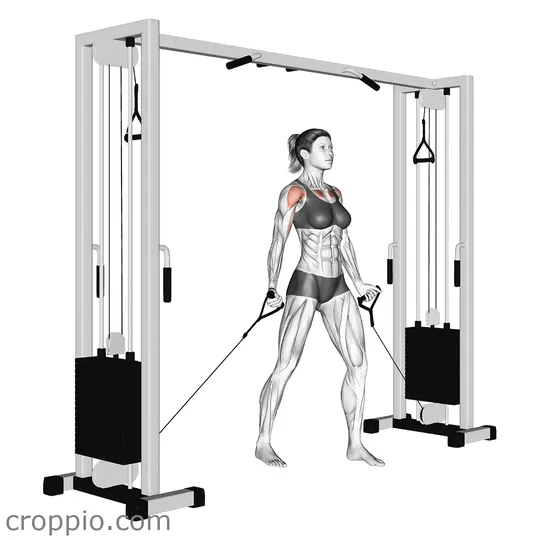Low Cable Chest Flys

Muscles Involved
Low cable chest flys primarily target the pectoralis major, which is the large muscle in the chest responsible for the movement of the arms across the body. This exercise emphasizes the inner part of the chest and helps to develop definition and muscle size. Additionally, the anterior deltoids (front shoulder muscles) and the triceps also engage during this movement, serving as secondary muscles. By performing low cable chest flys, you not only enhance the chest muscles but also build supporting shoulder strength and stability.
Top Mistakes
- Using too much weight: This can lead to poor form and increased risk of injury.
- Overextending the arms: Letting the arms go too far back can strain the shoulder joints.
- Using excessive momentum: Swinging the weights rather than controlling the movement reduces effectiveness.
- Improper grip: A loose grip on the handle can decrease control and power output during the exercise.
Execution Tips
- Start with lighter weights to ensure you can maintain proper form throughout the movement.
- Stand with your feet shoulder-width apart, and keep a slight bend in your elbows to protect your joints.
- Engage your core and keep your back straight while performing the movement to prevent any unnecessary strain.
- Focus on bringing the arms together in a controlled manner, squeezing your chest at the peak of the movement, followed by a slow return to the starting position.
Workouts
Low cable chest flys can effectively be incorporated into an upper body workout routine. Aim for 3-4 sets of 10-15 repetitions, allowing adequate rest between sets to ensure muscle recovery. This exercise works well in conjunction with other chest exercises such as bench presses or push-ups, as well as shoulder exercises like lateral raises. Incorporating a variety of chest movements helps to target all areas of the pectoral muscles and prevent workout plateaus.
Conclusion
Low cable chest flys are an excellent exercise for anyone looking to enhance their chest strength and appearance. This movement not only helps in sculpting a more defined chest but also improves shoulder stability and overall upper body strength. By focusing on proper form and incorporating this exercise into a balanced workout routine, individuals can effectively achieve their fitness goals and promote muscle development.



